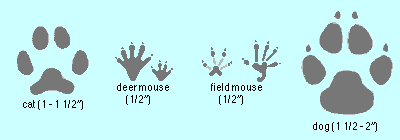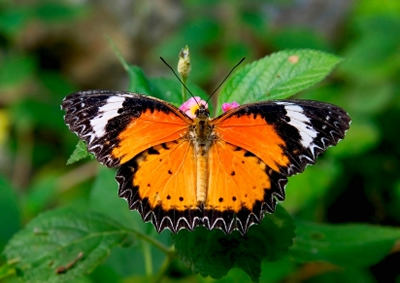HOW DO ANIMALS SPEND THE WINTER?
The weather gets colder, days get shorter and leaves turn color and fall off the trees. Soon, winter is here. Snow covers the ground. People live in warm houses and wear heavy coats outside. Our food comes from the grocery store. But what happens to the animals?

MIGRATE
Animals do many different, amazing things to get through the winter. Some of them "migrate." This means they travel to other places where the weather is warmer or they can find food.
Many birds migrate in the fall. Because the trip can be dangerous, some travel in large flocks. For example, geese fly in noisy, "V"-shaped groups. Other kinds of birds fly alone.

How do they know when it is time to leave for the winter? Scientists are still studying this. Many see migration as part of a yearly cycle of changes a bird goes through. The cycle is controlled by changes in the amount of daylight and the weather.
Birds can fly very long distances. For example, the Arctic tern nests close to the North Pole in the summer. In autumn, it flys south all the way to Antarctica. Each spring it returns north again.

Most birds migrate shorter distances. But how do they find their way to the same place each year? Birds seem to navigate like sailors once did, using the sun, moon and stars for direction. They also seem to have a compass in their brain for using the Earth's magnetic field.
Other animals migrate, too. There are a few mammals, like some bats, caribou and elk, and whales that travel in search of food each winter. Many fish migrate. They may swim south, or move into deeper, warmer water.
 Elk
ElkADAPT
Some animals remain and stay active in the winter. They must adapt to the changing weather. Many make changes in their behavior or bodies. To keep warm, animals may grow new, thicker fur in the fall. On weasels and snowshoe rabbits, the new fur is white to help them hide in the snow.
Food is hard to find in the winter. Some animals, like squirrels, mice and beavers, gather extra food in the fall and store it to eat later. Some, like rabbits and deer, spend winter looking for moss, twigs, bark and leaves to eat. Other animals eat different kinds of food as the seasons change. The red fox eats fruit and insects in the spring, summer and fall. In the winter, it can not find these things, so instead it eats small rodents.
Animals may find winter shelter in holes in trees or logs, under rocks or leaves, or underground. Some mice even build tunnels through the snow. To try to stay warm, animals like squirrels and mice may huddle close together.
Certain spiders and insects may stay active if they live in frost-free areas and can find food to eat. There are a few insects, like the winter stone fly, crane fly, and snow fleas, that are normally active in winter. Also, some fish stay active in cold water during the winter.

HIBERNATE
Some animals "hibernate" for part or all of the winter. This is a special, very deep sleep. The animal's body temperature drops, and its heartbeat and breathing slow down. It uses very little energy. In the fall, these animals get ready for winter by eating extra food and storing it as body fat. They use this fat for energy while hibernating. Some also store food like nuts or acorns to eat later in the winter. Bears, skunks, chipmunks, and some bats hibernate.
 Hibernating black bear.
Hibernating black bear.AND MORE
Cold-blooded animals like fish, frogs, snakes and turtles have no way to keep warm during the winter. Snakes and many other reptiles find shelter in holes or burrows, and spend the winter inactive, or dormant. This is similar to hibernation.
Water makes a good shelter for many animals. When the weather gets cold, they move to the bottom of lakes and ponds. There, frogs, turtles and many fish hide under rocks, logs or fallen leaves. They may even bury themselves in the mud. They become dormant. Cold water holds more oxygen than warm water, and the frogs and turtles can breath by absorbing it through their skin.
Insects look for winter shelter in holes in the ground, under the bark of trees, deep inside rotting logs or in any small crack they can find. One of the most interesting places is in a gall. A gall is a swelling on a plant. It is caused by certain insects, fungi or bacteria. They make a chemical that affects the plant's growth in a small area, forming a lump. The gall becomes its maker's home and food source.
Every type of insect has its own life cycle, which is the way it grows and changes. Different insects spend the winter in different stages of their lives. Many insects spend the winter dormant, or in "diapause." Diapause is like hibernation. It is a time when growth and development stop. The insect's heartbeat, breathing and temperature drop. Some insects spend the winter as worm-like larvae. Others spend the winter as pupae. (This is a time when insects change from one form to another.) Other insects die after laying eggs in the fall. The eggs hatch into new insects in the spring and everything begins all over again.



